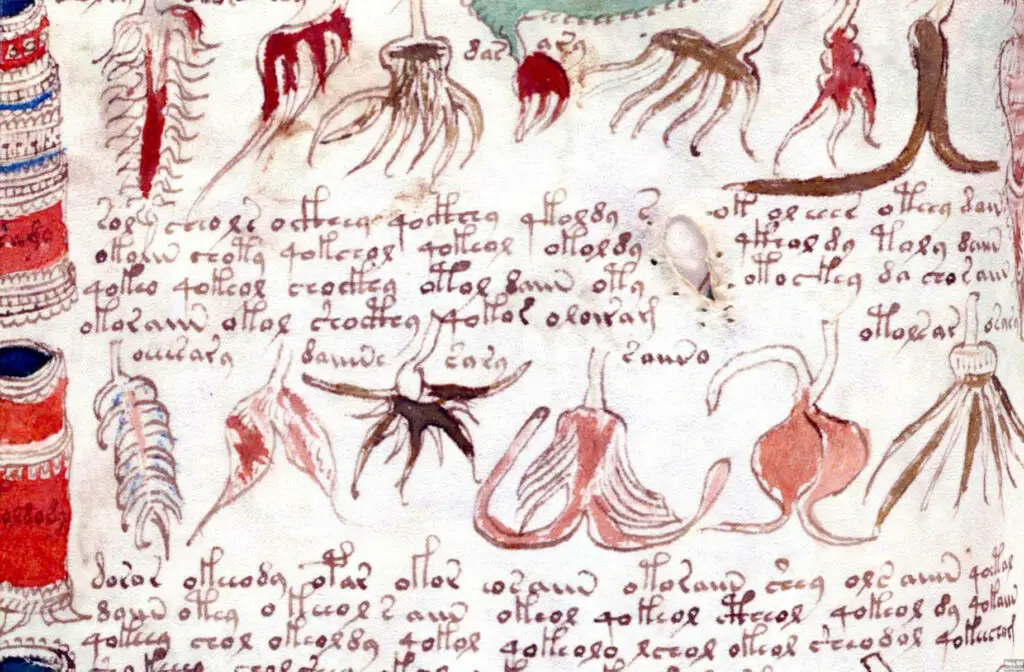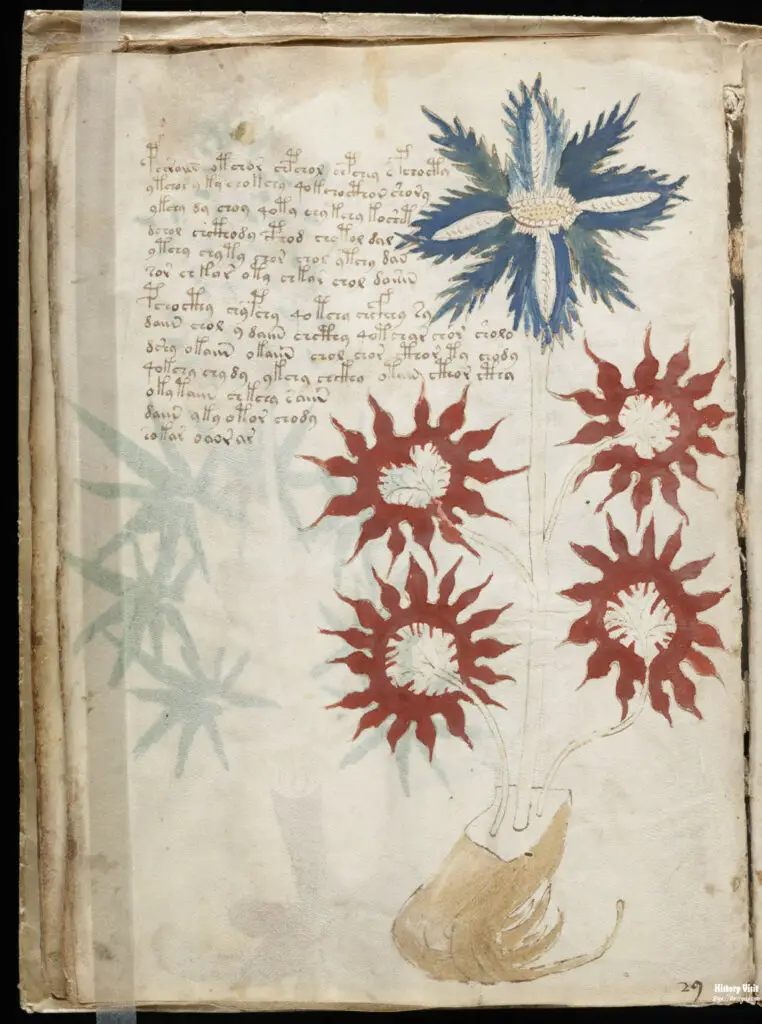Crack the Code: The Mystery of the Voynich Manuscript
Introduction

The Voynich Manuscript, a mysterious and undeciphered codex, has baffled scholars, cryptographers, and enthusiasts since its discovery. Named after Wilfrid Voynich, a Polish book dealer who acquired it in 1912, the manuscript is believed to date back to the early 15th century. Its unique combination of unknown script and bizarre illustrations has made it one of the most intriguing and enigmatic texts in history, sparking countless theories and endless curiosity.
This cryptic book consists of approximately 240 pages, filled with strange plant drawings, astronomical symbols, and puzzling diagrams, all accompanied by text written in an unknown language. Despite numerous attempts to decode it, the manuscript’s secrets remain hidden, contributing to its legendary status among historical mysteries. The manuscript’s allure lies not only in its indecipherable content but also in the historical context and the people connected to its story.
In this article, we will delve into the historical context and discovery of the Voynich Manuscript, trace its journey through history, examine its physical characteristics and content, and explore the enduring allure and scholarly efforts to unlock its secrets. Through this exploration, we aim to understand why the Voynich Manuscript continues to captivate the minds of researchers and the public alike.
Discovery and Early History
The Voynich Manuscript entered the modern historical record when Wilfrid Voynich purchased it from the Jesuit College at Frascati in Italy. Voynich, a renowned antiquarian, recognized its potential significance and dedicated his efforts to studying and promoting the manuscript. He believed it to be a rare and valuable artifact, possibly containing esoteric knowledge or lost scientific information from the medieval period.
Early attempts to date the manuscript and understand its origins suggested that it was created in the early 15th century, possibly in Northern Italy. This dating was later confirmed by radiocarbon analysis of the vellum pages, which placed its creation between 1404 and 1438. The manuscript’s unique characteristics and unknown script quickly attracted the attention of scholars and cryptographers, who sought to uncover its secrets.
Initial theories about the manuscript’s purpose and origin varied widely. Some believed it to be a pharmacopoeia, containing herbal remedies and medical knowledge, while others speculated it might be an alchemical text or a treatise on an unknown science. The mystery surrounding its origins and purpose only added to the manuscript’s allure, making it a focal point for historical and cryptographic research.
The Manuscript’s Journey Through History
Tracing the Voynich Manuscript’s journey through history reveals a fascinating web of connections and speculations. Before Wilfrid Voynich’s acquisition, the manuscript’s ownership history is murky but includes some notable figures. One of the earliest known owners was Georg Baresch, an obscure alchemist from Prague in the early 17th century. Baresch was baffled by the manuscript and sought help from Athanasius Kircher, a Jesuit scholar renowned for his work in deciphering ancient texts.
Kircher’s correspondence with Baresch and later with Jan Marek Marci, a scientist and rector of Charles University in Prague, provides some of the earliest documented evidence of attempts to understand the manuscript. Marci eventually sent the manuscript to Kircher, but there is no record of Kircher successfully deciphering it. The manuscript then seemingly vanished until it resurfaced in the library of the Jesuit College at Frascati, where Voynich found it.
The manuscript’s connections to historical figures such as John Dee, an English mathematician and alchemist, and Edward Kelley, his associate, have also been suggested. Some theories propose that Dee and Kelley might have brought the manuscript from the continent to England. However, these connections remain speculative, as no concrete evidence links them directly to the manuscript. The journey of the Voynich Manuscript through history highlights the intrigue and mystery that continue to surround it.
Physical Characteristics and Content
The Voynich Manuscript is a work of art in its own right, comprising approximately 240 pages of vellum. Its physical characteristics include detailed and elaborate illustrations that defy easy categorization. The manuscript is divided into several sections, each characterized by distinct types of drawings and text, contributing to its enigmatic nature.
The botanical section features drawings of plants that do not correspond to any known species, accompanied by paragraphs of text in the unknown script. These illustrations have puzzled botanists and historians of science, leading to various interpretations. Some suggest the plants are fantastical or symbolic, while others propose they represent actual plants that have since gone extinct or are depicted in a stylized manner.
The astronomical section contains diagrams of celestial bodies, zodiac symbols, and what appear to be cosmological charts. These illustrations suggest that the manuscript might have been intended as an astronomical or astrological treatise. The biological section includes drawings of human figures, some interacting with complex networks of tubes and vessels, which some interpret as anatomical diagrams or representations of alchemical processes.
Finally, the pharmaceutical section features drawings of containers and what appear to be recipes or instructions, possibly related to the plants depicted earlier in the manuscript. This section further complicates the manuscript’s interpretation, as it suggests a practical application, potentially in medicine or alchemy. The Voynich Manuscript’s content is a rich tapestry of mystery, blending science, art, and cryptic language.
Conclusion

The Voynich Manuscript stands as one of history’s most enduring mysteries, captivating scholars, cryptographers, and the public for over a century. Its discovery by Wilfrid Voynich and subsequent scholarly attention have cemented its status as a unique and enigmatic artifact. The manuscript’s unknown script, bizarre illustrations, and elusive origins continue to challenge our understanding and fuel our fascination.
The journey of the Voynich Manuscript through history, from its creation in the early 15th century to its present status as a subject of intense study, reveals a story as complex and intriguing as the text itself. Connections to historical figures, speculative theories, and the manuscript’s mysterious content all contribute to its legendary status.
As we continue to explore and analyze the Voynich Manuscript, it remains a testament to the human desire to uncover and understand the unknown. The manuscript’s secrets may yet be revealed, offering insights into the minds and knowledge of its creators. Until then, the Voynich Manuscript endures as a symbol of the enigmatic and the unexplained, a true riddle wrapped in history.



Crack the Code: The Mystery of the Voynich Manuscript – History Visit